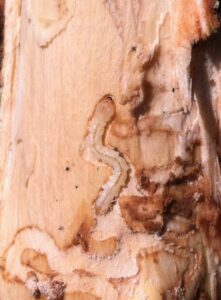*NEW* Fact Sheet: Emerald Ash Borer
go.ncsu.edu/readext?759583
en Español / em Português
El inglés es el idioma de control de esta página. En la medida en que haya algún conflicto entre la traducción al inglés y la traducción, el inglés prevalece.
Al hacer clic en el enlace de traducción se activa un servicio de traducción gratuito para convertir la página al español. Al igual que con cualquier traducción por Internet, la conversión no es sensible al contexto y puede que no traduzca el texto en su significado original. NC State Extension no garantiza la exactitud del texto traducido. Por favor, tenga en cuenta que algunas aplicaciones y/o servicios pueden no funcionar como se espera cuando se traducen.
Português
Inglês é o idioma de controle desta página. Na medida que haja algum conflito entre o texto original em Inglês e a tradução, o Inglês prevalece.
Ao clicar no link de tradução, um serviço gratuito de tradução será ativado para converter a página para o Português. Como em qualquer tradução pela internet, a conversão não é sensivel ao contexto e pode não ocorrer a tradução para o significado orginal. O serviço de Extensão da Carolina do Norte (NC State Extension) não garante a exatidão do texto traduzido. Por favor, observe que algumas funções ou serviços podem não funcionar como esperado após a tradução.
English
English is the controlling language of this page. To the extent there is any conflict between the English text and the translation, English controls.
Clicking on the translation link activates a free translation service to convert the page to Spanish. As with any Internet translation, the conversion is not context-sensitive and may not translate the text to its original meaning. NC State Extension does not guarantee the accuracy of the translated text. Please note that some applications and/or services may not function as expected when translated.
Collapse ▲
Figure 2. The emerald ash borer larva feeds on the inner bark of ash trees. Kelly Oten CC BY – 4.0
Check out NC State Extension Forestry’s new fact sheet by Kelly Oten on the invasive forest pest, the emerald ash borer. The emerald ash borer is a devastating invasive beetle that has already killed millions of ash trees in the US. First detected in North Carolina in 2013, it has already spread to 61 of our 100 counties, making it one of the fastest spreading invasive forest pests our state has ever seen.
Check out this fact sheet to learn more about the biology, identification, management, and more of emerald ash borer and save your ash.


